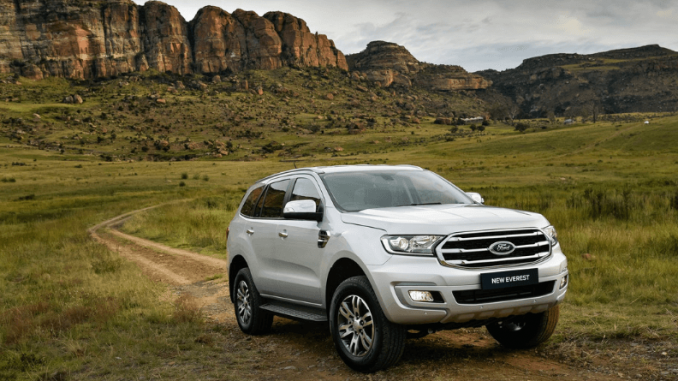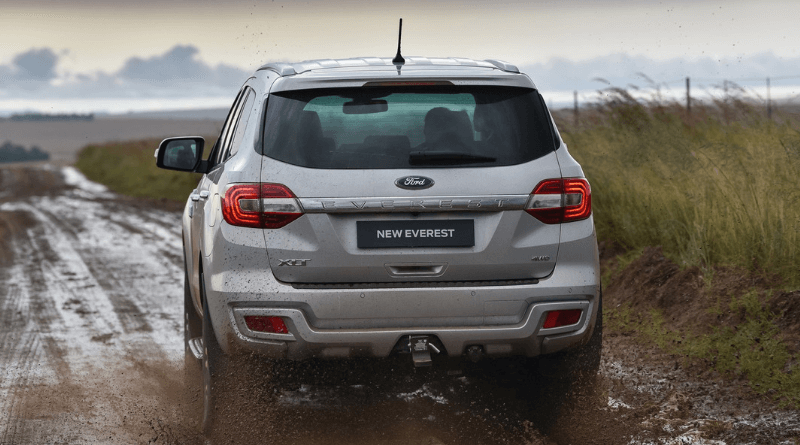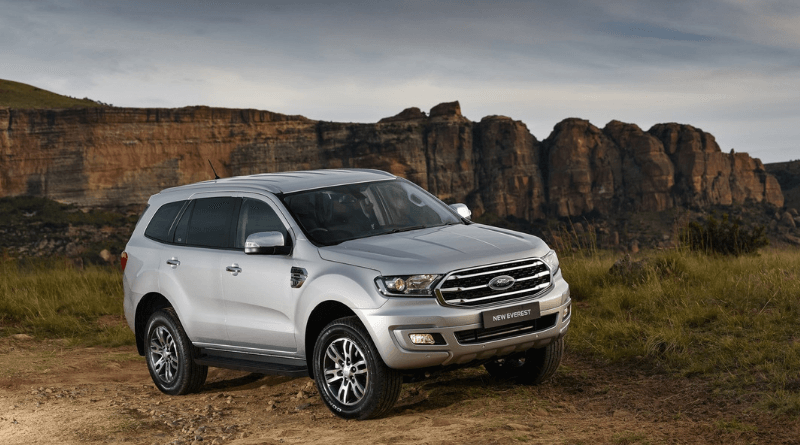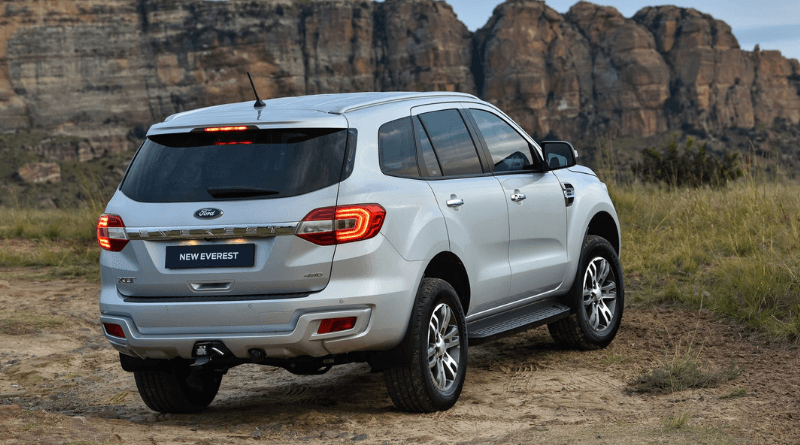
Ford has made its Everest seven-seater sport utility vehicle (SUV) more appealing and upmarket than ever with a range of styling, suspension and feature upgrades, complemented by the introduction of the new 2.0-litre Bi-Turbo and Single Turbo engines that recently debuted on the New Ford Ranger.
The existing 2.2 and 3.2-litre Duratorq TDCi engines continue to do duty in certain models, paired with the current six-speed automatic transmission.
Bi-turbo power
One of the main defining features of the New Everest is the introduction of the all-new 2.0-litre Bi-Turbo and Single Turbo engines that recently debuted on the New Ranger. The Bi-Turbo engine headlines the revised range, employing a twin turbocharger set-up to improve both low-end torque and high-end power, while reducing fuel consumption and emissions.
A small high pressure (HP) turbo works in conjunction with a large low pressure (LP) turbo, controlled with by-pass valves that determine the operating mode depending on engine speed. At lower engine speeds the two turbos work in series, enhancing torque and responsiveness, while at higher revs the small HP turbo is bypassed, and the larger LP turbo provides boost to deliver top-end power.
Read: It’s here! Ranger Raptor barges into SA
The maximum power output for the 2.0 Bi-Turbo engine is 157kW, matched to a peak torque figure of 500Nm – improvements of 10kW and 30Nm respectively compared to the existing 3.2-litre TDCi engine. The new engine also offers exceptional refinement, with low levels of noise, vibration and harshness. It is available in the Everest XLT 4×2 and 4×4 models, as well as the top-spec Everest Limited.
Along with the range-topping Bi-Turbo engine, a new 2.0-litre Single Turbo unit has been added to the line-up, offered in XLT 4×2 specification. It delivers a peak power output of 132kW, matched to 420Nm of torque – with up to 340Nm available from just 1 250 r/min. The current 2.2-litre Duratorq TDCi engine, with 118kW and 385Nm, is available in the Everest XLS 4×2 model, while the 3.2-litre five-cylinder TDCi engine, with 147kW and 470Nm, is still offered in XLT 4×4 guise.

New automatic transmission
The new-generation 2.0-litre Bi-Turbo and 2.0 Single Turbo engines are exclusively available with Ford’s all-new ten-speed automatic transmission, which boasts significant improvements in efficiency, fuel economy and all-round performance. The ten-speed’s architecture reduces the gaps in available power and acceleration between gears, providing smoother acceleration response, and enabling improved performance at lower engine speeds, according to Ford. The electronic control system features real-time adaptive shift-scheduling, engineered to help select the correct gear at the right time, including skip-shift and direct downshift capabilities.
The unit’s Progressive Range Select (PRS) system gives the driver the ability to lock out gears from the automatic shifting range for improved control. With the transmission in ‘Drive’, pressing the ‘-’ button on the new gearshift lever activates PRS. All available gears are shown on the instrument cluster, with the current gear indicated. Pressing the ‘-’ button again locks out gears, beginning with the highest gear. Only the available gears are then displayed, and the transmission automatically shifts between these ratios. Pressing the ‘+’ button unlocks gears to allow the transmission to shift to higher ratios, and the transmission shifts automatically within the gear range the driver selects.
The existing Select Shift Transmission (SST) functionality is retained, enabling the driver to switch to ‘Sport’ mode which makes the gearbox more responsive for dynamic driving performance. There’s also the option of full manual mode from the ‘S’ position, controlled via the +/- buttons on the gear lever for optimal control.
Ford engineering data, based on real-world driving cycles, indicates an improvement in fuel-efficiency of up to nine percent in the case of the 2.0 Bi-Turbo engine mated to the ten-speed automatic transmission, compared to the previous range-topping model. In the case of the 2.2 and 3.2 Duratorq TDCi engines, both units are matched to the existing six-speed automatic transmission.

Range and pricing:
- 2.2 TDCi XLS 6AT 4×2 – R499 900
- 2.0 SiT XLT 10AT 4×2- R584 900
- 2.0 BiT XLT 10AT 4×2 – R624 100
- 3.2 TDCi XLT 6AT 4×4 – R644 000
- 2.0 BiT XLT 10AT 4×4 – R687 700
- 2.0 BiT Limited 10AT 4×4 – R761 200
All models come standard with Ford Protect, comprising a four-year/120 000km comprehensive warranty, three-year/unlimited distance roadside assistance and five-year/unlimited km corrosion warranty. A six-year/90 000km service plan is included, with 15 000km service intervals.

